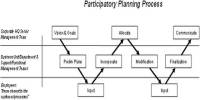In order to boost profitability, businesses are constantly attempting to maximize efficiencies and decrease expenses. With labor being one of the most expensive expenses in the company, it’s only logical that businesses would begin looking for inventive ways to get work done more efficiently and at a reduced cost, which is how the contingent workforce was developed.
Contingent labor, often known as contract work, is a non-permanent employment relationship with minimal job security, remuneration on a piece work basis, and is typically part-time (with changeable hours). Despite the lack of job stability, freelancers frequently report wages that are higher than their previous formal positions.
A contingent worker is someone who works for a company but is not hired as an employee. Consultants, freelancers, independent contractors, independent professionals, temporary contract workers, or temps are other terms for them. Contingent workers may work under a contract, on a temporary basis, or on an as-needed basis. They are frequently employed to complete a specific project rather than to assume a continuing, open-ended workload like a permanent employee.
Examples of contingent workers include:
- Independent contractors
- Freelancers
- Consultants
- Temporary workers employed by a staffing agency or other third party and assigned to work for your organization.
Many successful contingent workers can earn more money or work fewer hours than salaried employees, and in some cases, both. Furthermore, contingent workers frequently cherish their independence. They are free to select the most interesting assignments, and once you tell them what to do, the law states that they are free to pick how to accomplish it—no micromanaging is permitted.
These personnel are employed to execute specific duties outlined in a statement of work (SOW). They leave once the job is completed, though they may be summoned back if another project emerges. As a result, they are not employees of a company, and the business owner is under no obligation to supply ongoing labor on a permanent basis.
The atypical workforce includes “many jobholders, contingent and part-time workers, and persons in alternative work arrangements,” according to the US Bureau of Labor Statistics (BLS). These workers now make up a sizable section of the US labor force, and “almost four out of five employers, in establishments of all sizes and industries, use some type of unconventional staffing.” “People in alternative work arrangements” include independent contractors, contract employees, on-call workers, and temporary workers.
Companies that face seasonality, uneven swings in their labor force, or economic downturns might benefit greatly from contingent workers. Because of the important flexibility of external labor, a corporation may quickly ramp up or down depending on business conditions.
The contingent workforce is a significant component of a company’s personnel strategy since it gives them more agility and flexibility. According to a report by the U.S. Government Accountability Office, contingent workers now account for more than 40% of U.S. employment. The rise of the gig economy is also driving the expansion of the contingent workforce.
















